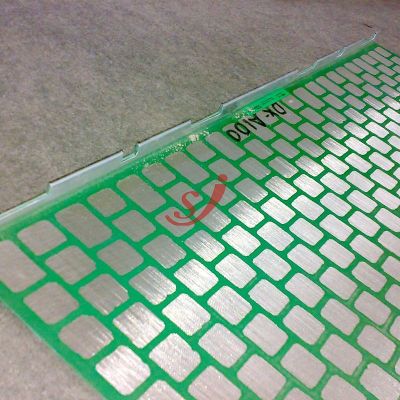Shale shaker screens are a critical component in oilfield drilling operations. These screens serve as the primary filter to remove solids from drilling fluids, ensuring smooth and efficient drilling processes. The quality and type of screen used can significantly affect the performance of the shale shaker and the overall efficiency of the drilling operation. To optimize screen usage, it's essential to understand the different types available and their specific applications in 2024.
There are several types of shale shaker screens available in the market today, each designed for specific applications and operational environments. Selecting the right screen depends on factors like particle size, fluid viscosity, and drilling conditions. Below is a breakdown of the most common types of shaker screens in use:
Flat panel screens are one of the most widely used screen types due to their simplicity and cost-effectiveness. These screens consist of a single layer or multiple layers of mesh supported by a rigid frame. They are typically used in environments where low-cost screening is preferred. However, they may have a shorter lifespan compared to other types, making them less suitable for highly abrasive environments.
Pyramid screens, also known as corrugated screens, have a three-dimensional surface that increases the available screening area compared to flat screens. This design allows for improved solids separation efficiency and greater fluid capacity. Pyramid screens are ideal for operations where fine particle filtration is critical, and increased capacity is required to handle larger volumes of drilling fluid.
Hookstrip screens are characterized by their pre-tensioned construction, which allows them to be easily installed on a shaker. These screens are known for their durability and resistance to wear, making them a popular choice in harsh drilling environments. They are commonly used in applications where fast screen changes are required, as they can be replaced without dismantling the shaker system.
Composite screens are a newer type of screen that combines traditional steel mesh with a composite frame. This combination offers several advantages, including reduced weight, increased flexibility, and enhanced durability. Composite screens also provide better resistance to corrosion and temperature extremes, making them ideal for demanding drilling environments. Their higher initial cost is offset by their longer lifespan and improved performance over time.
Wedge wire screens, often used in specialized applications, consist of a series of parallel wires with narrow slots in between. These slots provide precise control over particle size separation, making wedge wire screens suitable for operations where specific filtration levels are required. While they are highly durable, wedge wire screens are generally more expensive and are used in environments where precision is essential.

Selecting the right type of shaker screen involves several key factors that can impact performance and longevity. Here are some crucial points to consider:
Related articles:The mesh size refers to the number of openings per square inch of the screen. A finer mesh is used for smaller particle sizes, while a coarser mesh is suitable for larger particles. Always ensure that the mesh size matches the specific requirements of the drilling operation to avoid clogging or fluid loss.
The material and construction of the shaker screen play a crucial role in its lifespan. Screens made from composite materials or stainless steel tend to be more durable and resistant to harsh environments. Consider the drilling conditions when selecting a screen material that can withstand wear and tear.
Different shaker screens are designed to handle varying volumes of fluid. If your operation involves high fluid throughput, opting for pyramid or composite screens can help maximize efficiency by increasing the available surface area for filtration.
Harsh drilling environments require screens that are resistant to abrasion, corrosion, and extreme temperatures. In such cases, composite or hookstrip screens are often preferred for their enhanced durability and resistance to damage.
Even with the right screen selection, several issues can arise during use, including:
Screen Blinding: Screen blinding occurs when particles become stuck in the mesh openings, reducing filtration efficiency. This can be minimized by selecting screens with anti-blinding features or using a finer mesh for specific applications.
Excessive Wear: Over time, screens are subjected to abrasive materials that cause wear and tear. Regular inspection and maintenance can prolong the lifespan of the screen. Using screens made from more durable materials, such as composites, can also reduce the impact of abrasive environments.
Improper Tensioning: Shaker screens need to be properly tensioned to function effectively. Improper tension can lead to screen damage or inefficient filtration. Regularly check the tension of the screen to ensure optimal performance.
The type of Replacement shaker screen you choose plays a significant role in the efficiency and effectiveness of your drilling operation. From flat panel screens for basic filtration to advanced composite and pyramid screens for demanding applications, understanding the available options can help you make informed decisions that improve your operation's overall performance. Regular maintenance and proper screen selection will ensure optimal shaker performance, reduce downtime, and maximize the lifespan of your equipment.
Related articles:Previous
None
Next
None
Related Articles
Comments
Please Join Us to post.
0